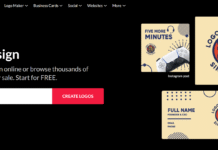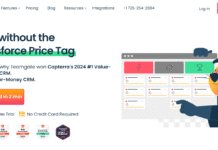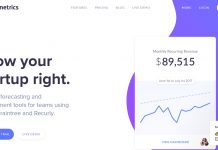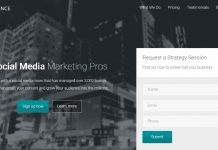From Zero to One Million Users: Growth Hacking Lessons from Global Startups
Reaching one million users is a dream milestone for every startup. It represents more than just numbers. It symbolizes market validation, customer trust, and the beginning of exponential growth. Yet, few startups achieve this target quickly or efficiently. What separates those that do from the rest often comes down to their ability to apply smart, data-driven growth tactics known as growth hacking.
In 2025, as competition across industries intensifies, the study of growth hacking lessons from global startups offers valuable insights. The stories of companies that have scaled from zero to one million users reveal repeatable patterns, frameworks, and decisions that can guide new founders toward sustainable success.
This article explores those principles in depth, analyzing real examples of startups that scaled fast without massive budgets. By understanding their strategies, you can apply similar growth frameworks to your own business, experiment systematically, and avoid costly mistakes. For additional resources on startup growth strategies, explore the Startup Insights section for detailed analyses and case studies.
What is Growth Hacking
Growth hacking is the science of finding unconventional, creative, and low-cost ways to acquire and retain users. It combines marketing, data analytics, and product development into one unified approach. Unlike traditional marketing, which often focuses on campaigns and branding, growth hacking is centered on experimentation and optimization.
The term originated from early-stage startups that lacked large budgets but needed rapid traction. Their goal was not just visibility but scalable, repeatable growth. Over the years, growth hacking lessons have evolved from small experiments into a discipline embraced by startups and corporations alike.
At its core, growth hacking is built on three pillars:
-
Data-driven decision-making
-
User behavior understanding
-
Continuous experimentation
Each successful startup, from Dropbox to Airbnb, built its growth strategy around these pillars, testing and refining every stage of the user journey.
The Mindset Behind Growth
Before applying techniques, it is vital to understand the mindset that drives every growth hacker. Growth is not a department or a one-time initiative. It is a company-wide culture where every decision, from product design to customer support, focuses on maximizing user acquisition, engagement, and retention.
Startups that internalize this mindset encourage employees to test hypotheses rapidly, measure impact, and iterate based on real data. These organizations embrace failure as part of the process. Each failed test reveals information that can lead to the next big win.
The best growth hacking lessons emphasize that creativity must be paired with discipline. Without measurement, creativity becomes guesswork. Without creativity, measurement leads to stagnation. The intersection of both creates compounding growth.
Phase One: Finding Product-Market Fit
No growth strategy works without product-market fit. This is the stage where a startup validates whether its product solves a real problem for a defined audience. The early growth hacking lessons from successful companies show that founders must prioritize learning over scaling.
Identify a Core Audience
Start by defining a specific customer segment rather than targeting everyone. Slack began as a tool for internal communication within game development teams before expanding to a wider market. By focusing on one niche and serving it perfectly, Slack achieved a viral adoption curve.
Measure User Engagement
Retention is a more reliable indicator of success than downloads or signups. Founders should track how many users return and actively use the product after the first week or month. Early retention data acts as a compass guiding product improvements.
Iterate Based on Feedback
Continuous iteration based on user feedback is one of the timeless growth hacking lessons. For example, Airbnb’s founders personally photographed hosts’ apartments after realizing that poor listing photos were hurting conversions. This small change significantly boosted engagement and became part of their growth DNA.
Startups that focus too early on marketing before achieving product-market fit often waste resources. Growth hacking thrives when there is a solid foundation of user satisfaction and product relevance.
Phase Two: Building Viral Loops
Once product-market fit is confirmed, the next stage involves creating viral loops. A viral loop happens when each new user brings in additional users naturally, creating exponential growth.
The Dropbox Model
Dropbox’s referral system remains one of the most cited growth hacking lessons in history. The company offered extra storage space to both the referrer and the referee. This created an incentive loop that turned every user into a marketer. The referral mechanism was embedded directly into the product, ensuring seamless sharing.
The Notion Community Effect
Notion grew rapidly through community-driven expansion. Instead of spending on ads, it empowered creators and educators to make templates and tutorials. The product spread through user-generated value, which created both trust and awareness.
The Figma Collaboration Factor
Figma leveraged its collaborative design nature to spread organically. Every designer invited others to collaborate within the same project, turning work into an acquisition channel. This is one of the most practical growth hacking lessons for B2B startups: build features that naturally encourage sharing or collaboration.
The key is to identify what motivates your users to share your product. It could be utility, recognition, or rewards. The viral loop should feel like a natural extension of the product experience, not a forced marketing gimmick.
Phase Three: Leveraging Data and Automation
Data is the fuel that powers growth hacking. In modern startups, every interaction is measured, analyzed, and optimized.
Tracking User Behavior
Startups that scale fast rely on behavioral analytics to understand how users move through the product. Metrics like activation rate, time to value, and cohort retention give insight into what drives satisfaction. The lesson is clear: do not make assumptions, let data guide every growth decision.
A/B Testing Everything
One of the recurring growth hacking lessons from successful startups is the importance of experimentation. A/B testing allows you to test different landing pages, messages, or pricing strategies. Even small tweaks, such as button color or headline phrasing, can lead to measurable gains in conversion rate.
Marketing Automation
As startups grow, managing communication manually becomes impossible. Automation tools help send personalized messages at scale. For example, when a user signs up but doesn’t complete onboarding, an automated sequence can re-engage them. These small interventions multiply over time.
Predictive Insights
Advanced startups now use machine learning to predict user churn and lifetime value. This helps focus resources on retaining high-value users. Integrating predictive analytics into daily operations has become one of the more modern growth hacking lessons shaping 2025.
Phase Four: Scaling Channels Efficiently
Not every channel drives growth equally. Some channels burn money while others deliver consistent returns. Learning to identify and double down on effective channels is crucial.
Paid vs Organic Balance
While paid campaigns can jumpstart awareness, sustainable growth depends on organic methods. Startups like Canva and Duolingo built massive audiences by investing in SEO, content marketing, and user communities. These channels continue to generate traffic long after initial investment.
Partnerships and Integrations
Collaborating with other startups or integrating with popular platforms is another lesson drawn from global growth stories. Zoom’s rapid rise was partly fueled by its integrations with Slack and Google Calendar, making it easier for users to adopt the product.
Influencer Collaboration
Micro-influencers often produce better results than celebrity endorsements. Their communities are smaller but more engaged. This shift is one of the newer growth hacking lessons reflecting how user trust has evolved in digital ecosystems.
Phase Five: Retention and Monetization
User acquisition is only half the journey. Retention transforms growth into a sustainable system. Monetization ensures that the business model supports further innovation.
Creating Habit Loops
Products that reach one million users often build habits around usage. Duolingo, for instance, uses streaks and gamification to keep users engaged daily. Habit formation turns casual users into loyal fans.
Listening to Churn Signals
When users leave, they leave clues. Tracking churn reasons and addressing them quickly prevents recurring losses. It is one of the most overlooked growth hacking lessons yet among the most powerful.
Tiered Monetization
Freemium models work best when users are encouraged to upgrade for real value. Startups like Spotify and Zoom show that offering free access while reserving premium features can drive both adoption and revenue growth.
Retention requires continuous innovation. Startups that stop improving lose momentum, even if they once achieved massive success. Sustainable growth depends on listening, adapting, and innovating repeatedly.
Transition to the next part
The journey from zero to one million users is rarely linear. Every stage presents different challenges and opportunities. In the second part of this article, we will explore real-world startup case studies, advanced growth frameworks, and the most valuable growth hacking lessons founders can implement today. The final section will also include a structured checklist for building a repeatable, data-driven growth system tailored to your startup’s goals.
Real Startup Case Studies
Understanding theory is helpful, but real-world examples reveal how growth hacking lessons translate into measurable growth. Many startups across the world started with minimal budgets yet achieved massive user bases by experimenting, adapting, and learning from data.
Dropbox: Turning Users into Marketers
Dropbox began as a basic file-sharing tool but became a global phenomenon through one of the smartest growth hacking lessons ever executed. The company added a referral feature that rewarded both the referrer and the referee with free storage. Each user became a potential marketer, creating an endless viral loop that fueled exponential growth.
The takeaway here is that growth can be embedded into the product itself. Instead of spending heavily on advertising, Dropbox engineered user-driven promotion directly into its experience. This shows how powerful growth hacking lessons can turn ordinary users into brand advocates without extra marketing costs.
Airbnb: Building Trust through Experience
Airbnb’s growth journey also began slowly. In the early stages, low-quality listing photos and limited trust kept users away. The founders took photos themselves to improve presentation and credibility. This simple but impactful move increased bookings and became one of the most important growth hacking lessons about solving core user objections before scaling.
By focusing on community trust and visual appeal, Airbnb turned its users into loyal fans. It demonstrated that sustainable growth depends not only on traffic but also on how well a startup earns user confidence.
Hotmail: The Simplicity of Virality
Hotmail’s famous growth campaign added a single line to every outgoing email inviting recipients to create their own account. That small message sparked millions of signups in just months. This remains one of the most memorable growth hacking lessons proving that simplicity and creativity often outperform complex advertising strategies.
The viral power of a message integrated directly into daily user behavior is still relevant today. Startups continue to replicate this principle in modern forms, such as referral links, embedded invites, and automated sharing features.
Zoom: Scaling through Integration
Zoom’s success is another result of clever growth hacking lessons applied consistently. Instead of focusing only on marketing, Zoom integrated seamlessly with popular productivity tools like Slack and Google Calendar. This strategic move encouraged adoption by making the product fit naturally into users’ workflows.
Zoom proved that integrations are not just technical features but strategic growth engines. The company’s product-led strategy allowed it to scale quickly while maintaining strong user retention.
Each of these stories demonstrates a common pattern. The startups built loops where product value and user behavior reinforced each other. These examples confirm that growth is not a one-time event but an ongoing process refined through consistent growth hacking lessons and experimentation.
Building a Repeatable Growth Framework
To apply growth hacking lessons effectively, startups need a structured approach that converts ideas into measurable progress. Without a clear framework, experiments remain random and difficult to evaluate.
1. Identify Core Metrics
Start by defining a single metric that represents user value—commonly called the North Star Metric. For example, Netflix tracks watch time while Slack focuses on daily active users. This metric guides every decision and ensures all experiments aim toward meaningful results.
2. Map the Growth Funnel
A growth funnel typically includes awareness, acquisition, activation, retention, referral, and revenue. The most successful growth hacking lessons show that analyzing each stage separately helps identify weak points. Improving one stage at a time leads to steady and predictable growth.
3. Run Controlled Experiments
Every major innovation starts as a small test. Growth hackers form hypotheses, run experiments, and analyze data to validate outcomes. Testing frequently allows startups to discover scalable tactics faster.
4. Automate Proven Processes
Automation ensures that what works continues to deliver results. If a referral program increases conversions, make it a permanent feature. The goal is to turn short-term wins into automated growth loops.
5. Learn and Adapt Continuously
No strategy lasts forever. The best growth hacking lessons remind us that growth comes from learning faster than competitors. Review your experiments regularly, identify what failed, and iterate.
Creativity and Data: The Dual Engines of Growth
Growth hacking relies equally on creativity and analytics. Data reveals what users do, but creativity determines what to test next. The blend of these two elements makes growth hacking lessons effective across industries.
Creative insights often arise from observing real user behavior. TikTok noticed that users enjoyed editing short videos elsewhere, so it built an easy-to-use editing experience directly in-app. This decision turned casual interest into a global phenomenon.
Analytics ensure that creativity stays grounded in measurable impact. Each test must have a clear success metric, and every campaign should link back to the product’s main growth goals. This balance defines the most impactful growth hacking lessons in modern startups.
Avoiding Common Growth Mistakes
Even well-funded companies sometimes fail because they misunderstand or misuse growth hacking lessons. Below are common pitfalls to avoid.
-
Scaling too early – Growing without product-market fit wastes resources. Always validate before expanding.
-
Ignoring retention – Acquiring users without maintaining engagement results in short-term spikes and long-term decline.
-
Overusing paid ads – Paid campaigns should supplement, not replace, organic and product-driven growth.
-
Neglecting experience – A confusing or slow product kills momentum regardless of marketing effort.
-
Lack of documentation – Without recording test results, teams lose valuable insights and repeat mistakes.
The key insight across all growth hacking lessons is that sustainable growth requires patience, documentation, and consistency. Quick wins fade, but structured learning compounds over time.
The Future of Growth Hacking
Looking ahead, the next wave of growth hacking lessons will be driven by automation, personalization, and artificial intelligence. Startups are increasingly using predictive analytics to anticipate user behavior and tailor experiences in real time.
AI-driven personalization will allow companies to design unique onboarding flows for each user segment. Automation will reduce manual marketing tasks and allow teams to focus on strategy and experimentation.
However, technology alone is not enough. Trust and transparency are emerging as critical components of future growth. Companies that handle data ethically and communicate openly with users will build stronger brands.
Collaboration across disciplines will also define the future. Engineers, data scientists, and marketers must work together to create cohesive growth systems. The line between marketing and product development will continue to blur as growth becomes a shared responsibility.
These evolving dynamics confirm that while tools and platforms change, the core growth hacking lessons—understand users, test rapidly, and scale what works—remain the foundation of modern startup success.
Key Takeaways for Founders
-
Start with experiments – Small, quick tests reveal insights faster than big campaigns.
-
Focus on retention – Keeping users is cheaper and more valuable than acquiring new ones.
-
Use data as guidance – Analytics prevent emotional decision-making and drive smarter experiments.
-
Build communities – Encourage organic sharing to turn users into promoters.
-
Automate success – Turn winning strategies into repeatable systems.
Applying these growth hacking lessons builds momentum even with limited resources. They transform startups from uncertain beginnings into scalable and efficient growth machines.
Conclusion
Reaching one million users may seem like a distant dream, but with the right framework and mindset, it is entirely achievable. The stories of Dropbox, Airbnb, Zoom, and Hotmail prove that innovation, simplicity, and consistency lead to exponential expansion.
The most enduring growth hacking lessons show that growth is not luck—it is a disciplined process rooted in user value and constant improvement. Every startup, regardless of industry, can apply these lessons by focusing on solving real problems and optimizing user experiences.
By building a team culture that embraces experimentation and data-driven decisions, founders can uncover repeatable strategies that drive long-term success. The combination of creativity, analysis, and relentless curiosity forms the foundation of every great growth story.
As the startup world evolves, the principles of growth hacking will continue to guide innovation. Founders who apply these insights will stay ahead of trends, adapt faster, and scale smarter. For continuous learning, fresh case studies, and practical examples, explore Startup Insights to keep improving your growth strategy and shaping the future of your business.












































